Making a rock sculpture involves creativity, patience, and an appreciation for natural materials; rockscapes.net is here to guide you. We’ll explore how to select the right stones, balance them securely, and create stunning art that enhances any space. Discover the art of stone stacking and bring your artistic vision to life with these enduring creations.
1. Understanding the Allure of Rock Sculptures
Rock sculptures, also known as stone balancing or rock stacking, have a mesmerizing appeal. Beyond their visual charm, they represent harmony, balance, and a connection with nature. These sculptures can transform any garden, yard, or indoor space into a tranquil retreat. Rock balancing offers a meditative and creative outlet, allowing individuals to express their artistic flair while engaging with the earth’s raw materials.
1.1 Why Are Rock Sculptures So Appealing?
Rock sculptures captivate with their simplicity and elegance. The act of balancing stones requires patience and a keen eye for detail, turning it into a meditative process. Each sculpture is unique, reflecting the artist’s personal touch and the natural characteristics of the stones. This blend of art and nature creates a calming effect, making rock sculptures a perfect addition to any environment seeking serenity.
1.2 The Significance of Rock Sculptures in Different Cultures
Across various cultures, rock stacking holds deep spiritual and artistic significance. In some cultures, balanced rock formations symbolize harmony with nature, acting as offerings or landmarks. For instance, the Inuit people of North America create “inuksuk,” stone figures used as navigational aids and sacred markers. Understanding these cultural roots adds depth to the art of rock sculpture, enhancing its aesthetic and emotional value.
2. Essential Tools and Materials for Your Rock Sculpture
Creating a rock sculpture requires minimal tools but thoughtful material selection. Gathering the right stones and preparing a suitable workspace are essential first steps. This section will guide you through the necessary equipment and materials to ensure your rock sculpture is both beautiful and stable.
2.1 Selecting the Right Types of Rocks
The type of rock you choose significantly impacts the final sculpture. Different rocks offer unique textures, colors, and shapes, allowing for diverse artistic expressions.
| Type of Rock | Characteristics | Best Use Cases |
|---|---|---|
| Granite | Durable, varied colors, and textures | Large, stable bases, and accent pieces |
| Slate | Flat, layered, ideal for creating height | Tall, elegant sculptures, and decorative elements |
| River Stone | Smooth, rounded, and comes in assorted sizes | Balancing sculptures, and adding natural appeal |
| Fieldstone | Irregular shapes, rustic appearance | Creating organic, natural-looking sculptures |
| Sandstone | Porous, soft, and easy to shape | Sculptures needing intricate detail, and textured surfaces |
| Limestone | Sedimentary rock, colors range from white to gray | Can be carved easily, perfect for garden sculptures |
Granite’s durability makes it ideal for stable bases, while slate’s flat layers are perfect for creating height. River stones add a touch of natural smoothness, and fieldstone offers a rustic, organic feel. Sandstone, being soft, allows for detailed shaping, and limestone, a sedimentary rock, is easily carved, making it perfect for garden sculptures. According to the University of Arizona’s Department of Geosciences, the diverse geological landscape of Arizona provides access to a wide array of these rocks, each with distinct properties suitable for various sculpting needs.
2.2 Essential Tools for Rock Balancing
While the essence of rock balancing lies in the natural stones, having a few tools can aid in the process. A small brush helps clean off dirt, enhancing grip and stability. Gloves protect your hands and improve your hold on the rocks. A level can be useful for ensuring horizontal balance, especially in complex designs.
| Tool | Purpose | Benefits |
|---|---|---|
| Small Brush | Cleaning dirt and debris from rock surfaces | Enhances grip, and improves stability |
| Gloves | Protecting hands, and improving grip | Prevents cuts, and ensures a secure hold |
| Level | Ensuring horizontal balance | Helps create stable, and visually appealing structures |
| Chisel & Hammer | Breaking off small pieces, and refining rock shapes | Fine-tuning the balance, and fitting of stones together |
| Safety Glasses | Protecting eyes from debris | Essential when using a chisel, and hammer |
| Soft Cloths | Wiping surfaces, and improving grip | Keeps stones clean, and ensures a secure connection between rocks |
A chisel and hammer can refine rock shapes for better fitting, though caution and safety glasses are essential. According to a study by the American Society of Landscape Architects, incorporating proper tools not only enhances precision but also ensures safety, enabling artists to create stunning rock sculptures with ease.
3. Step-by-Step Guide to Making a Rock Sculpture
Creating a rock sculpture is a rewarding process that combines artistic vision with natural elements. This step-by-step guide will walk you through the process, from preparing your workspace to adding finishing touches, ensuring your sculpture is both beautiful and structurally sound.
3.1 Preparing Your Workspace
Before you begin, it’s essential to set up a dedicated workspace. Choose a flat, stable area, whether it’s in your garden, yard, or even indoors. Ensure you have enough space to move around and assess your sculpture from different angles. Keeping your tools and materials organized will make the process smoother and more enjoyable.
3.2 Finding the Balance Point
The secret to a successful rock sculpture lies in finding the balance point of each stone. This is the point where the rock can stand on its own without tipping over. Start by placing a rock on a flat surface and gently tilting it until you find the spot where it feels most stable. This may take some practice, but it’s a crucial step in creating a sturdy sculpture.
3.3 Stacking and Balancing Techniques
Once you’ve identified the balance point of the first rock, carefully place another rock on top. Experiment with different angles and positions until you find a stable configuration. Gravity is your friend, but patience is your greatest tool. The goal is to distribute the weight evenly, creating a balanced and visually appealing structure. According to structural engineers at MIT, the key to stability in stone structures is understanding weight distribution and leveraging natural friction, principles that equally apply to smaller rock sculptures.
3.4 Adding Finishing Touches
After stacking the rocks, step back and assess your sculpture. Make any necessary adjustments to improve balance and visual appeal. Consider adding small decorative elements, such as pebbles or plants, to enhance the natural beauty of your creation.
4. Creative Ideas and Designs for Rock Sculptures
Rock sculptures offer endless possibilities for creative expression. From simple stacks to intricate arrangements, the designs are limited only by your imagination. This section explores various ideas and designs to inspire your next rock sculpture project, incorporating elements of nature and artistry.
4.1 Simple Stacking Techniques
Simple stacking is a great starting point for beginners. It involves balancing rocks of various sizes on top of each other to create a tower-like structure. Focus on finding the balance point of each rock and ensuring a stable base. This technique highlights the natural beauty of the stones and provides a sense of accomplishment with each successful stack.
4.2 Incorporating Natural Elements
Enhance your rock sculpture by incorporating natural elements such as plants, water, and lighting. Surround your sculpture with small flowers or moss to create a harmonious blend of art and nature. Adding a water feature, such as a small fountain, can bring a sense of tranquility. Strategically placed lighting can highlight the texture and form of the rocks, creating a captivating display, especially at night.
4.3 Advanced Balancing Techniques
For those seeking a challenge, advanced balancing techniques offer a way to create more complex and dynamic sculptures. This involves using rocks of unusual shapes and sizes, experimenting with angles, and defying gravity with seemingly impossible balances. Advanced techniques require patience, precision, and a willingness to experiment, but the results can be truly stunning.
5. Maintaining and Preserving Your Rock Sculpture
A well-maintained rock sculpture can last for years, bringing joy and serenity to your space. Proper care involves regular cleaning, protecting against weather, and making necessary repairs. This section provides essential tips to ensure your rock sculpture remains beautiful and stable over time.
5.1 Cleaning and Protecting Against Weather
Regular cleaning is essential to remove dirt and debris that can accumulate on your rock sculpture. Use a soft brush and water to gently clean the surfaces, avoiding harsh chemicals that could damage the stones. Protecting your sculpture from extreme weather conditions is equally important. If possible, move your sculpture indoors during severe storms or freezing temperatures to prevent damage.
5.2 Repairing and Reinforcing Your Sculpture
Over time, your rock sculpture may require minor repairs. If a rock becomes loose or unstable, carefully remove it and reposition it, ensuring a secure balance. For added stability, consider using a small amount of adhesive, such as epoxy, to secure the rocks together. According to the Getty Conservation Institute, using reversible adhesives ensures that repairs do not compromise the original materials and allows for future adjustments.
6. Where to Find Inspiration and Resources
Finding inspiration and resources is crucial for continuous learning and creativity in rock sculpture. This section highlights where to discover innovative designs, connect with fellow artists, and deepen your knowledge of stone balancing techniques.
6.1 Online Communities and Forums
Online communities and forums are invaluable resources for connecting with other rock sculpture enthusiasts. Websites like Reddit’s r/rockbalancing and the Stone Balance Collective offer platforms to share your work, ask questions, and learn from others. These communities provide a supportive environment for artists of all levels, fostering creativity and collaboration.
6.2 Books and Educational Resources
Books and educational resources can provide in-depth knowledge of rock sculpture techniques, materials, and cultural significance. “The Art of Stone Balancing” by Travis Ruskus offers practical advice and stunning examples. Additionally, local libraries and art centers often host workshops and classes on stone balancing, providing hands-on learning experiences.
7. Showcasing Rock Sculptures in Landscaping
Integrating rock sculptures into landscaping can elevate the beauty and tranquility of any outdoor space. Whether you have a sprawling garden or a small urban balcony, strategically placed rock sculptures can create focal points, enhance natural elements, and add a touch of artistic elegance.
7.1 Integrating Sculptures into Garden Design
Rock sculptures can serve as stunning focal points in garden design. Place a tall, elegant sculpture near a flower bed to draw attention and add height. Use smaller sculptures to accent pathways or create a sense of balance and harmony throughout the garden. The key is to complement the natural surroundings and create a cohesive aesthetic.
7.2 Creating Focal Points in Your Yard
Incorporate rock sculptures to create focal points in your yard. A large, intricate sculpture near the entrance can welcome guests and set a sophisticated tone. Arrange smaller sculptures around trees or shrubs to highlight their natural beauty. Consider adding lighting to showcase your sculptures at night, creating a magical ambiance.
8. The Therapeutic Benefits of Rock Balancing
Engaging in rock balancing offers numerous therapeutic benefits, promoting mindfulness, creativity, and emotional well-being. This section explores the mental and emotional advantages of this artistic practice, highlighting its positive impact on overall health.
8.1 Mindfulness and Meditation
Rock balancing is a meditative practice that promotes mindfulness and presence. The focus required to find the balance point of each rock quiets the mind, reducing stress and anxiety. This meditative process allows you to connect with the present moment, fostering a sense of calm and inner peace.
8.2 Enhancing Creativity and Problem-Solving Skills
Creating rock sculptures enhances creativity and problem-solving skills. Each sculpture presents a unique challenge, requiring innovative solutions and artistic vision. The process of experimenting with different rock configurations and balancing techniques stimulates the mind, fostering creativity and improving problem-solving abilities.
9. Rock Sculptures as Sustainable Art
Rock sculptures embody sustainable art by utilizing natural, locally sourced materials and minimizing environmental impact. This section explores the eco-friendly aspects of rock balancing and its role in promoting environmental awareness.
9.1 Using Natural and Locally Sourced Materials
Rock sculptures utilize natural materials, reducing the need for manufactured products and minimizing environmental impact. Sourcing rocks locally further reduces transportation emissions and supports local economies. By using what nature provides, rock balancing promotes sustainability and respect for the environment.
9.2 Promoting Environmental Awareness
Rock sculptures can serve as a reminder of the beauty and fragility of the natural world. By creating art that celebrates natural materials, you can inspire others to appreciate and protect the environment. Rock balancing encourages a deeper connection with nature, fostering environmental awareness and stewardship.
10. Frequently Asked Questions (FAQs) About Rock Sculptures
This section addresses common questions about rock sculptures, providing helpful insights and practical advice for beginners and experienced artists alike.
10.1 What is the best type of rock for balancing?
The best rocks for balancing have a flat surface and a good weight distribution. Sandstone, limestone, and river rocks are popular choices.
10.2 How do I find the balance point of a rock?
Place the rock on a flat surface and gently tilt it until you find the point where it feels most stable.
10.3 Can I use glue to secure my rock sculpture?
Yes, epoxy or other reversible adhesives can be used for added stability, especially in outdoor sculptures.
10.4 How do I clean my rock sculpture?
Use a soft brush and water to gently clean the surfaces, avoiding harsh chemicals.
10.5 How can I protect my rock sculpture from the weather?
Move your sculpture indoors during severe storms or freezing temperatures to prevent damage.
10.6 Where can I find inspiration for rock sculpture designs?
Online communities, books, and art centers are great resources for finding inspiration.
10.7 What are the therapeutic benefits of rock balancing?
Rock balancing promotes mindfulness, reduces stress, enhances creativity, and improves problem-solving skills.
10.8 Is rock balancing environmentally friendly?
Yes, rock balancing utilizes natural materials, promotes sustainability, and encourages environmental awareness.
10.9 How can I incorporate rock sculptures into my garden design?
Use sculptures as focal points, accent pathways, and complement natural elements to create a harmonious aesthetic.
10.10 What tools do I need for rock balancing?
Essential tools include a small brush, gloves, a level, a chisel, a hammer, safety glasses, and soft cloths.
11. Discover Your Rock Sculpture Journey with rockscapes.net
Ready to start your rock sculpture adventure? Rockscapes.net offers a wealth of inspiration, resources, and expert guidance to help you create stunning art that harmonizes with nature. Our extensive collection of designs, detailed guides on rock types, and insightful construction tips will empower you to bring your vision to life.
11.1 Exclusive Designs and Expert Tips
Explore our exclusive designs and expert tips to craft unique rock sculptures that capture the essence of balance and beauty. Whether you’re a beginner or an experienced artist, rockscapes.net provides the knowledge and inspiration to elevate your creations.
11.2 Connect with a Community of Rock Artists
Join our community of rock artists and share your passion for stone balancing. Connect with like-minded individuals, exchange ideas, and showcase your sculptures to a global audience. Together, we celebrate the art of rock sculpture and inspire creativity in all its forms.
11.3 Transform Your Space with Rockscapes
Transform your living space with the serene beauty of rock sculptures. Let rockscapes.net be your guide in creating stunning art that harmonizes with nature and reflects your unique artistic vision. Start your journey today and discover the endless possibilities of rock sculpture. Contact us at Address: 1151 S Forest Ave, Tempe, AZ 85281, United States, or Phone: +1 (480) 965-9011. Visit our website: rockscapes.net.
 Balanced rock tower garden art
Balanced rock tower garden art
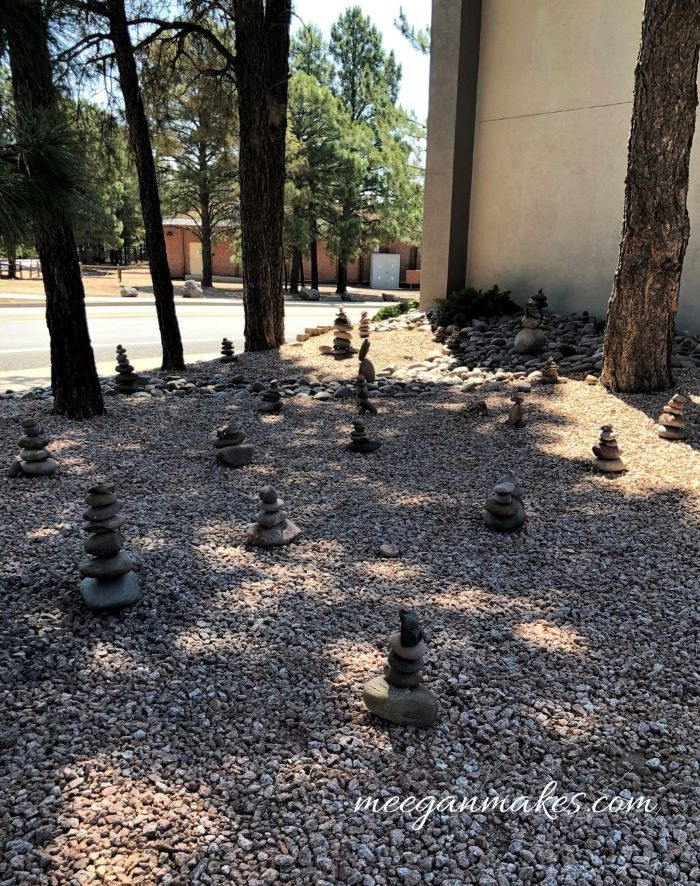 Natural rock tower garden art
Natural rock tower garden art
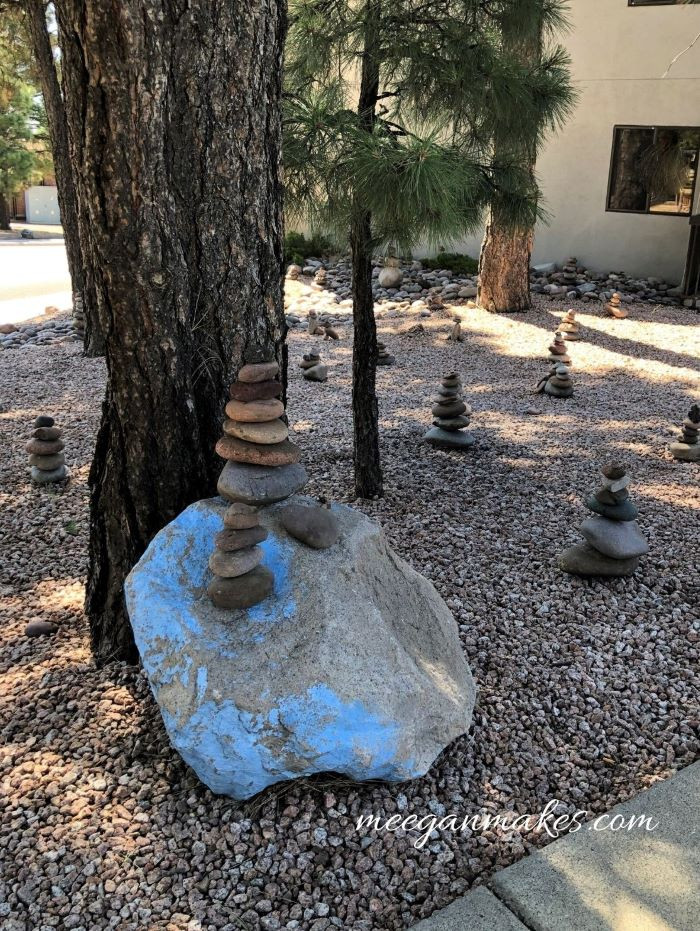 Creative garden art rock towers
Creative garden art rock towers
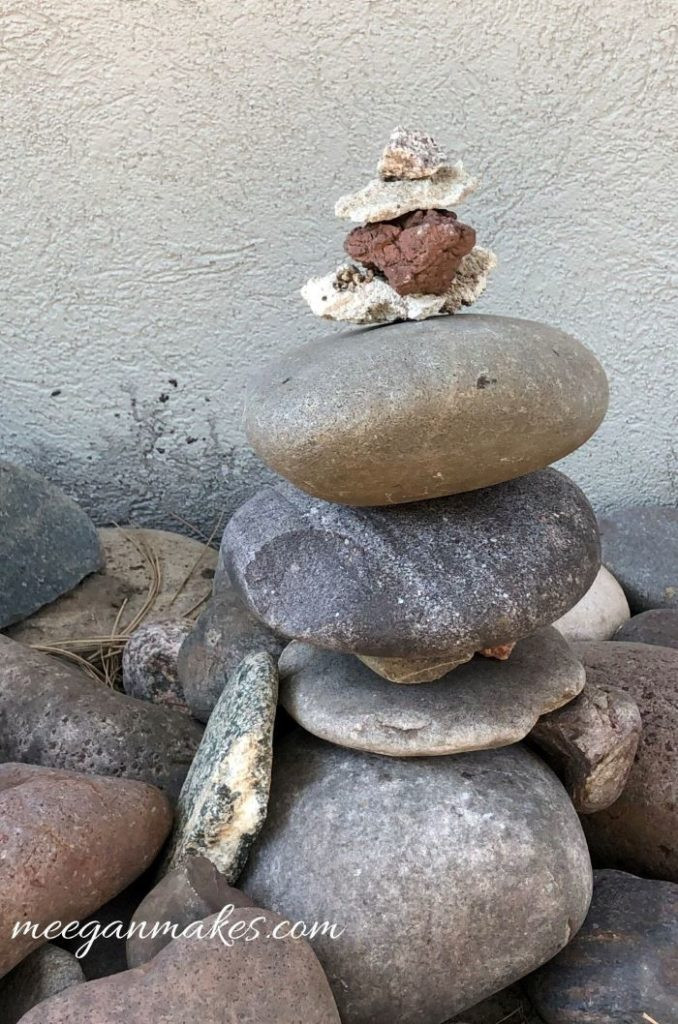 Rock garden ideas with small towers
Rock garden ideas with small towers
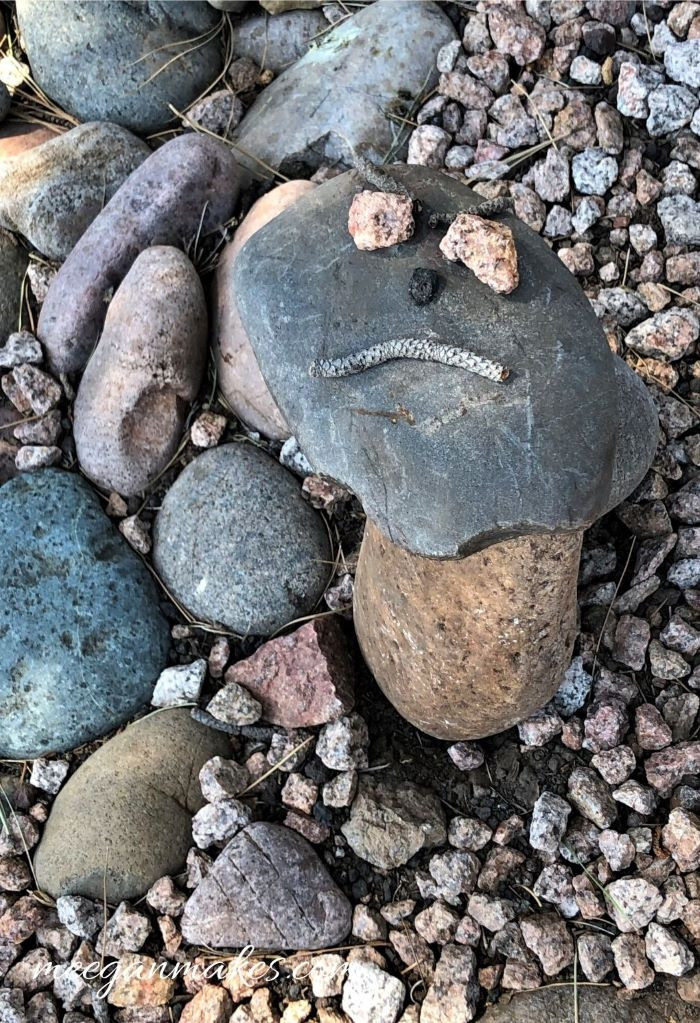 Creative rock tower face idea
Creative rock tower face idea
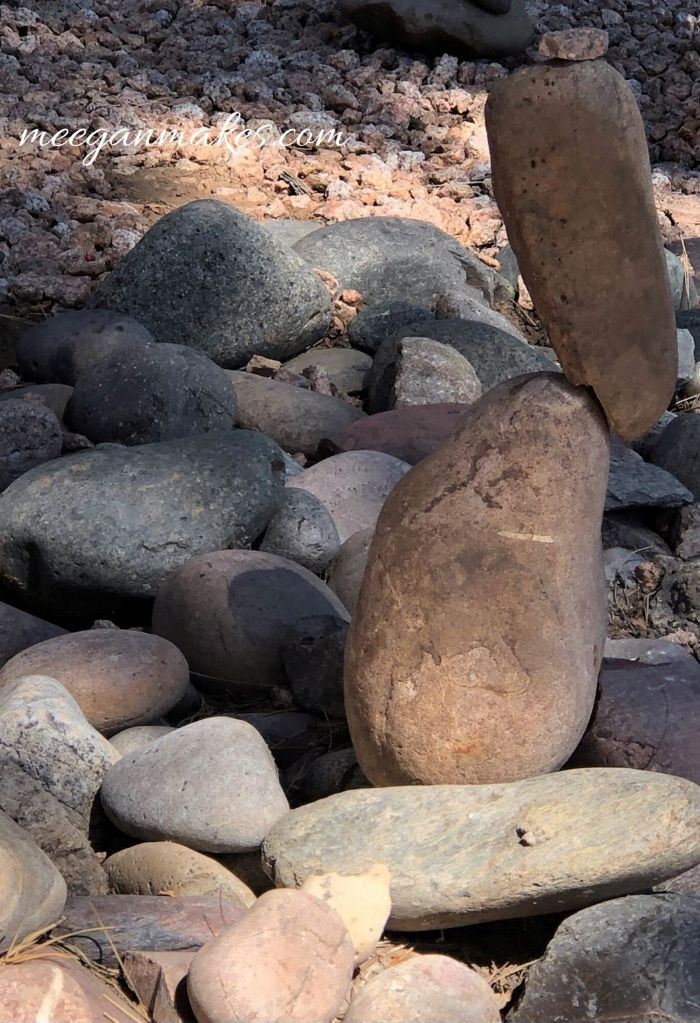 Unusual rock towers for garden art
Unusual rock towers for garden art
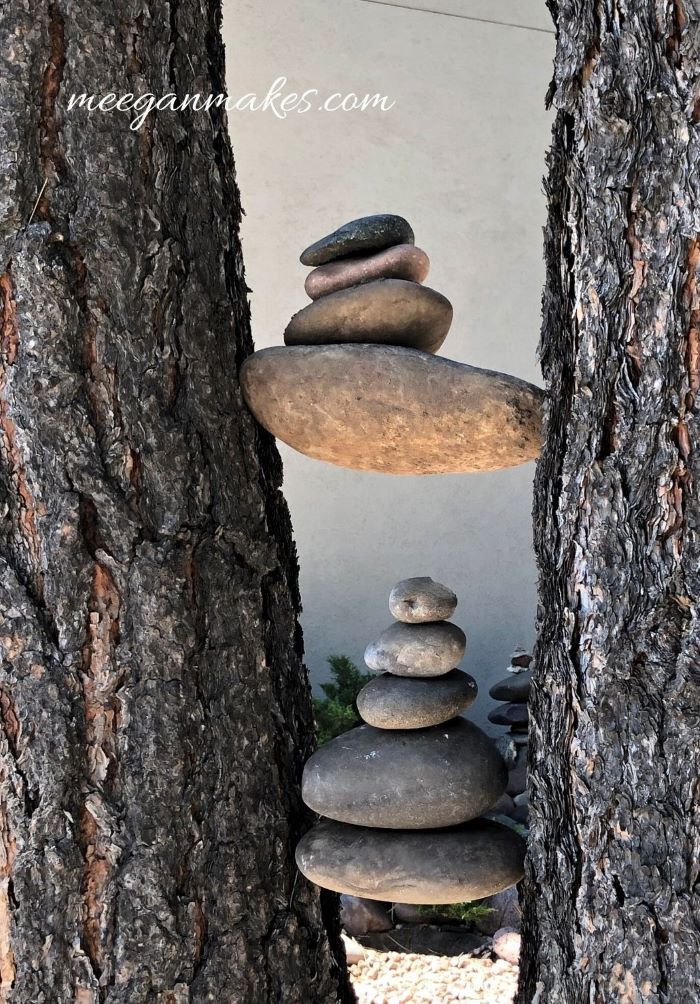 Rock tower in a tree for garden decor
Rock tower in a tree for garden decor